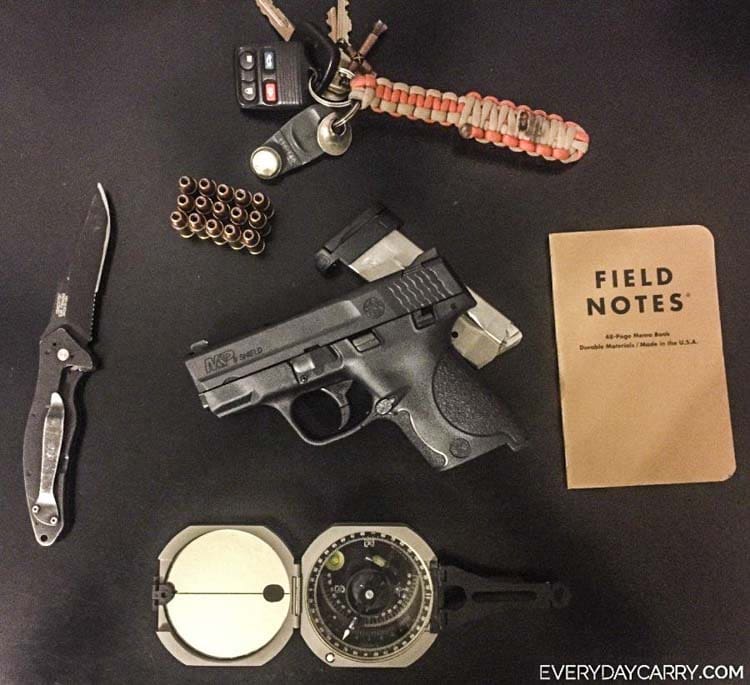
As a geology student, Clayton Goodspeed must find himself in the field a lot. Not one to leave himself in the lurch, he totes the popular Smith & Wesson M&P Shield. And why not? It’s easily concealable, reliable and shoots well. Check out what else Clayton packs with him at Everyday Carry.




He has a Field Notes book yet no pencil or pen. Carries a Brunton but not a rock hammer. Also, he might be a “new fangled” geology student, but in my day we could drink every other hard scientist under the table. Why no bottle opener? What kind of ill-prepared geology student is he?
“Carries a Brunton but not a rock hammer.”
The hammer was tossed at the last site survey?
Well to be fair, a rock hammer/crack hammer hardly fits in a pocket.
And yes, the geology students (at least in my time) were the hard-chargers. So I thought until I met my (now) Father-in-Law: a confirmed Scotch-drinking chemist until he started working for Jim Beam. I couldn’t hold a candle to him on my best day. I think the chemists build up an immunity to intoxicants during their education, that or they’re permanently half-pickled.
Drives a Ford. Late 90s? Early 00s?
“Rocklicker”. Becomes aroused when examining a core sample.
Geeze, I spent over a year processing core samples for sizing and met. lab chemical assays and I never heard the term ‘rocklicker’.
But having watched the geologists tag core trays, it’s an apt description, they stick their face right in the core looking at it with a jeweler’s loupe.
If I never have to grind another rock sample, I’ll die a happy guy never having to blow rock dust out of my nose. (we did wear fiber dust masks)…
One of my professors (the best one) was a former USGS field geologist who said you weren’t a real geologist unless you ate a pound of dirt in a year’s time. According to him, the easiest way to tell the difference in siltsone, mudstone and shale was to pulverize pieces with your hammer and “taste” it for the relative grittiness/fineness of the particles.
Down here, (Central Florida) it’s strip mining for ‘pebble phosphate’, a matrix of primarily sand-gravel, lots of fossil pieces.
https://www.floridamemory.com/blog/wp-content/uploads/2015/04/Phosphate-Map-1913-JPEG.jpg
1) I’m utterly amazed at the number of people care those field notes books around on EDC.com. Is it trendy or something, because I do not get it.
2) Is that a f*cking compass? WTF, Magellan?
It’s a Brunton Pocket Transit: > compass. Not only can it be used as a compass, it is used to determine strike and dip of rock units, as well as rough surveying. Big plus: never needs batteries/recharging, cell service, software upgrades, etc. Also not subject to poor/no reception due to weather phenomena.
Erratic compass behavior is usually caused by benign local magnetic phenomena but may also indicate that you are standing on or near a meteorite strike site. If your magnetic compass doesn’t match your GPS, slow down and survey the scene.
Hornady hollow points for a short-barrel gun? IMHO, a poor decision.
Comments are closed.